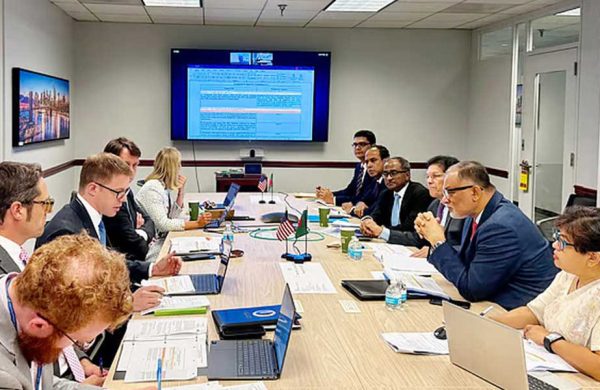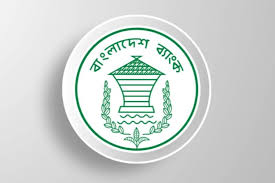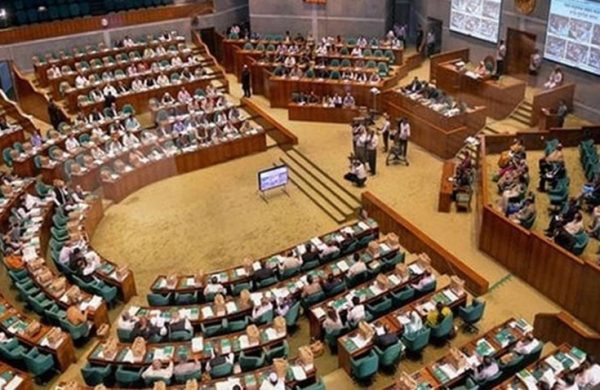Economy to face 7 challenges in FY26
- Update Time : Friday, June 13, 2025

Staff Correspondent:
The finance ministry has identified seven major challenges including tight monetary and fiscal policies, taken to tame elevated inflation levels for more than three years, in next fiscal year that may increase unemployment.
The challenges are high inflation, imposition of tariffs by Donald Trump’s administration, low tax-GDP ratio, weak financial sector, aftermaths of LDC graduation and climate risks, according to the finance ministry’s Medium-term Macroeconomic Policy Statement.
Due to high inflationary pressure, the government is taking tight fiscal and monetary policies but the tight policy stance has engendered a constrained business environment, characterised by elevated market interest rates stemming from higher policy rates.
If inflation does not decline in the coming months, private investment may slow and foreign direct investment inflows could remain subdued.
“Collectively, these factors may pose a risk to the economy by increasing unemployment and exerting downward pressure on GDP growth,” the report said.
All of the challenges are valid and these can impact investment and GDP growth, said Mustafizur Rahman, a distinguished fellow of the Centre for Policy Dialogue.
“But the question is what are they doing to face these challenges?”
The government is taking a contractionary monetary policy to tame inflation. Due to tight monetary policy, investment is being impacted.
However, investors are facing many other problems like shortage of gas, turnaround time of port, high costs for trade facilitation and institutional inefficiency, he added.
“It is not true that fiscal policy is not tight, so unemployment may not rise because of this,” said Zahid Hussain, a former lead economist of the World Bank’s Dhaka office.
Next fiscal year’s budget deficit is almost similar to that of this fiscal year’s revised budget.
“So, it is not an accurate description that the fiscal policy is tight. The opposite argument may come, which is: if the fiscal policy was tight, the budget deficit could be lower.”
If the budget deficit was lower, the government would have borrowed lower from the banking sector, which would reduce interest rates and ease the private sector’s access to credit, he said.
After reaching a decade-high of 11.7 percent in July last year, inflation moderated to 9.4 percent in March, the finance ministry report said.
In response, the government has implemented a tighter monetary policy stance alongside fiscal consolidation measures aimed at stabilising prices and restoring macroeconomic stability.
Despite these measures, inflationary pressures remain elevated, it said.
The government is aiming to reduce inflation, but it has no clear indication in the monetary policy of how the policy rate will be changed with the changes in the inflation rate, Hussain said.
Meanwhile, the Trump administration’s imposition of a 37 percent tariff this year on Bangladeshi exports — temporarily suspended for 90 days — is raising concerns among exporters.
Moreover, the International Monetary Fund in its World Economic Outlook in April projected a global growth slowdown to 2.8 percent in 2025, which may further dampen external demand for Bangladeshi goods.
In light of these developments, achieving the projected 10 percent export growth in fiscal 2025-26 is likely to be challenging, said the policy statement.
Bangladesh continues to face the longstanding challenge of a persistently low tax-to-GDP ratio.
This constrains the government’s ability to mobilise adequate domestic resources, which ultimately limits fiscal space for critical development and social sector investments, undermining long-term growth prospects.
The financial sector is facing acute challenges marked by rising defaulted loans, distressed banks and ongoing liquidity pressures, it said.
While some banks have improved their positions, several remain at risk of bankruptcy.
Without comprehensive reforms addressing governance, risk management, legal recovery and potential mergers or acquisitions of weak banks, these vulnerabilities could significantly undermine financial stability and hinder overall economic growth, it said.
Bangladesh may face key challenges after its graduation from the least-developed country bracket in 2026, including loss of preferential trade benefits, maintaining export competitiveness and achieving greater economic diversification.
Additionally, adapting to reduced access to concessional financing and climate resilience funding will be critical as Bangladesh remains highly vulnerable to climate change impacts.
The Climate Risk Index 2025 estimates that the disasters result in annual economic losses of approximately $3 billion — about 1 percent of GDP –impacting over 6.3 million people each year.
Given the recurring nature of such events, comprehensive assessments and effective strategies are essential to mitigate potential economic damages and enhance climate resilience, it added.













